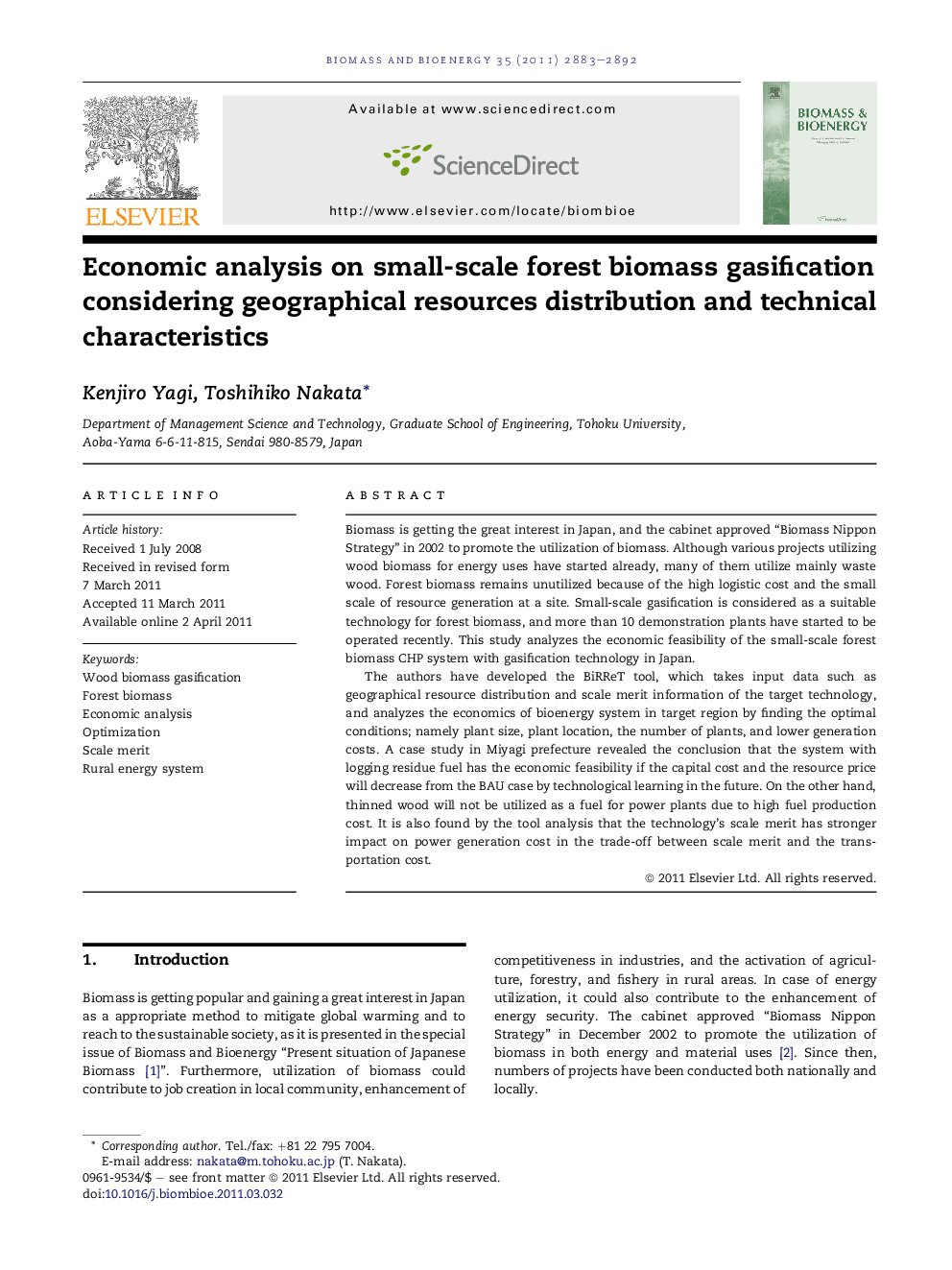| کد مقاله | کد نشریه | سال انتشار | مقاله انگلیسی | نسخه تمام متن |
|---|---|---|---|---|
| 677874 | 888625 | 2011 | 10 صفحه PDF | دانلود رایگان |

Biomass is getting the great interest in Japan, and the cabinet approved “Biomass Nippon Strategy” in 2002 to promote the utilization of biomass. Although various projects utilizing wood biomass for energy uses have started already, many of them utilize mainly waste wood. Forest biomass remains unutilized because of the high logistic cost and the small scale of resource generation at a site. Small-scale gasification is considered as a suitable technology for forest biomass, and more than 10 demonstration plants have started to be operated recently. This study analyzes the economic feasibility of the small-scale forest biomass CHP system with gasification technology in Japan.The authors have developed the BiRReT tool, which takes input data such as geographical resource distribution and scale merit information of the target technology, and analyzes the economics of bioenergy system in target region by finding the optimal conditions; namely plant size, plant location, the number of plants, and lower generation costs. A case study in Miyagi prefecture revealed the conclusion that the system with logging residue fuel has the economic feasibility if the capital cost and the resource price will decrease from the BAU case by technological learning in the future. On the other hand, thinned wood will not be utilized as a fuel for power plants due to high fuel production cost. It is also found by the tool analysis that the technology’s scale merit has stronger impact on power generation cost in the trade-off between scale merit and the transportation cost.
► We develop a design tool for installing biomass gasification plants in rural Japan.
► The tool considers plant locations, capacity, wood fuel supply, and costs.
► The scale merit of the combustion plant shows strong impact on power generation costs.
► Logging residue fuel has an economic feasibility as a biomass energy fuel.
► Thinned wood requires material utilization combined with energy utilization.
Journal: Biomass and Bioenergy - Volume 35, Issue 7, July 2011, Pages 2883–2892